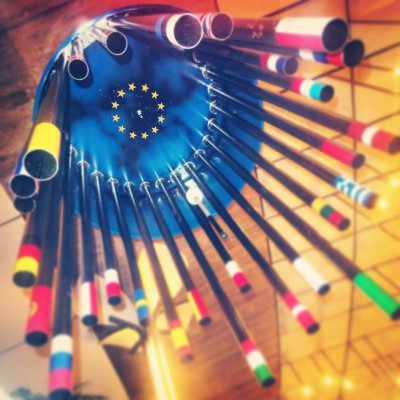
Creative Europe 2021-2027: what's new?
In late May 2021, the Creative Europe programme 2021-2027 was adopted and released, and the first call will be out in the first weeks of June. The total budget of the new Programme is € 2.44 billion, which is a 50% increase compared to its predecessor programme (2014-2020).
What’s new?
Money distribution
Just as its predecessor, the new programme will be divided into three strands, with a slight difference in how the budget is divided between them: Culture: 33% (31 % in the predecessor programme); MEDIA: 58% (56% in 2014-2021); and the Cross-sectoral strand with 9%, which is a drop from 13%. The Cross-sectoral strand will no longer finance the Guarantee Facility (which is now part of the Invest EU programme), but it will cover quite a few new actions.
Guiding values
Some of the changes and novelties in the freshly released programme stem from the shift in the EU’s overall guiding priorities. The new Creative Europe programme no longer has to be aligned with the “Europe 2020 Strategy - A strategy for smart, sustainable and inclusive growth”, which had a prevailing economic approach. Creative Europe 2021-2027 is oriented towards the European Green Deal and the New Agenda for Culture 2018, among others. The focus on “growth and job”, “business models” and “turning innovative ideas into products and services” shifted towards greening, gender equality, social inclusion and stronger international dimension. Moreover, the Programme is expected "to address the structural challenges of Europe’s cultural and creative sectors, which have been exacerbated by the COVID-19 pandemic".
The new programme recognises, more explicitly, the multiplicity of values of culture: “Culture, arts, cultural heritage and cultural diversity are of great value to European society from a cultural, educational, democratic, environmental, social, human rights and economic point of view and should be promoted and supported.” In line with the enhanced social dimension of the programme, the Regulation establishing Creative Europe 2021-2027 highlights the power of culture to enhance social cohesion, social integration and intercultural dialogue.
This shift in priorities can be seen at different levels, from objectives of the programme to its evaluation indicators. As the Regulation states, “the Programme objectives shall be pursued in a way that encourages inclusion, equality, diversity and participation.” As for the indicators, the new Regulation requires to report on “the number of projects supported by the Programme addressed to socially marginalised groups.”
Sectoral priorities
Beyond the regular horizontal actions (cooperation projects, networks, platforms), Creative Europe will support a few sectoral initiatives. The Programme's Culture strand pays more distinct attention to the music sector, building up on the legacy of Music Moves Europe. Music is part of the new Programme's sectoral actions, together with the book and publishing sector, architecture and cultural heritage. The Regulation also leaves space to “other sectors …, where specific needs are identified”, which most likely means that in the period between 2021 and 2027 the group of priority sectors can be enlarged.
Support to media and journalism
Freedom of expression and artistic freedom gained more importance within the new Programme. Support to the media freedom articulated in a more concrete shape than the freedom of artisitc expression. The Cross-sectoral strand "will promote a free, diverse and pluralistic media environment, encouraging crossovers and cross-cutting activities supporting the news media sector." Moreover, the Programme will support new media professionals and promote media literacy to foster the development of critical thinking among citizens.
Support to smaller players and individual professionals
The Programme pays attention to better supporting small and micro- organisations, by achieving substantial simplification of bureaucratic procedures, mostly in the application stage, and, for small-scale projects, by allowing higher co-financing rates. Three type of projects will be introduced (instead of smaller and larger projects only, as it was in 2014-2021):
- Category 1 - Small scale projects: minimum 3 entities from 3 different eligible countries (80% co-financing rate)
- Category 2 - Medium scale projects: minimum 5 entities from 5 different eligible countries (70 % co-financing rate)
- Category 3 - Large scale projects: minimum 10 entities from 10 different eligible countries (60 % co-financing rate).
Creative Europe will also continue supporting individual mobility of artists and cultural professionals (building up on the legacy of i-Portunus).
Introduction of the Seal of Excellence
The new Regulation states: “It should be possible to award quality proposals for actions that are eligible under the Programme but cannot be financed under it due to budgetary constraints with a Seal of Excellence label, based on a specific set of criteria. The Seal of Excellence label recognises the quality of the proposal and simplifies the search for alternative funding under the European Regional Development Fund or the European Social Fund Plus.”
Sources:
- Regulation (EU) 2021/818 of the European Parliament and of the Council of 20 May 2021establishing the Creative Europe Programme (2021 to 2027)
- Regulation (EU) No of the European Parliament and of the Council of 11 December 2013 establishing the Creative Europe Programme (2014 to 2020)
- 2021 annual work programme for the implementation of the Creative Europe Programme
